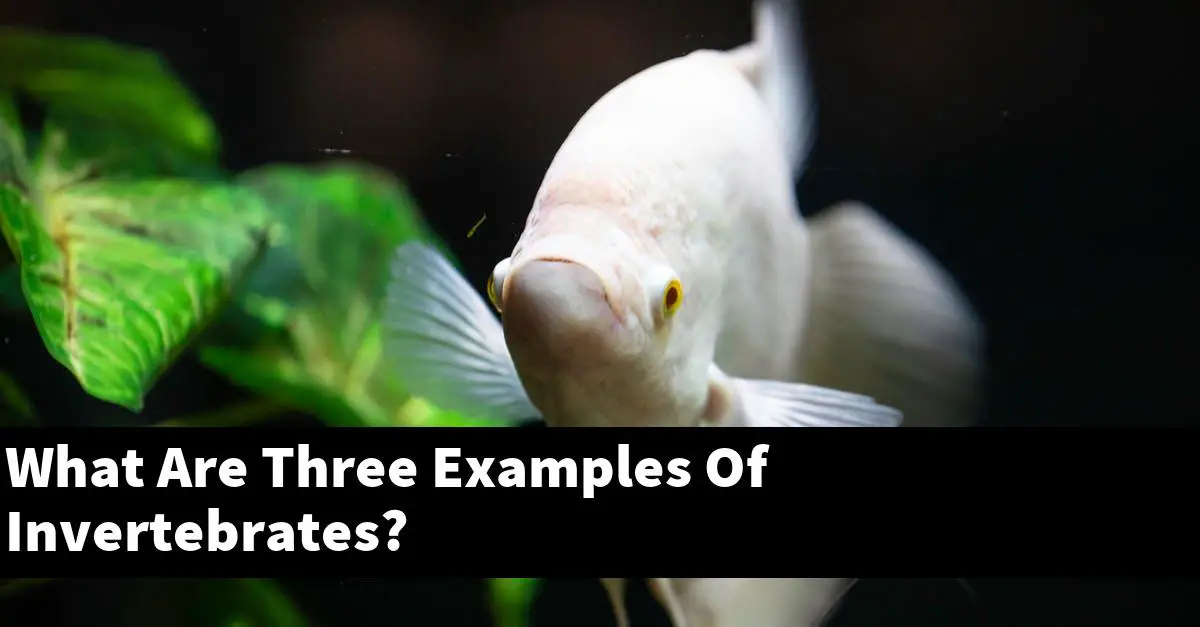Invertebrates are animals that lack a backbone. The three main groups of invertebrates are the arthropods, the mollusks, and the annelids.
What percentage of animals are invertebrates?
There are approximately 1.5 million different species of invertebrates, which makes up over 60% of all animal species. Invertebrates include things like crabs, shrimp, lobsters, and snails.
What are the 4 main types of invertebrates?
Fluval Bug Bites Bottom Feeder Fish Food, Granules for Small to Medium Sized Fish, 1.60 Oz., A6586
$3.81 (as of June 23, 2025 20:26 GMT +03:00 - More infoProduct prices and availability are accurate as of the date/time indicated and are subject to change. Any price and availability information displayed on [relevant Amazon Site(s), as applicable] at the time of purchase will apply to the purchase of this product.)Ultum Nature Systems Ultra Clear Rimless Aquarium - Low Iron Glass Fish Tank with 45° Mitered Edges, 5mm-12mm Thick, Leveling Mat Included (25S, Shallow, 2 Gallon)
$54.99 (as of June 23, 2025 21:43 GMT +03:00 - More infoProduct prices and availability are accurate as of the date/time indicated and are subject to change. Any price and availability information displayed on [relevant Amazon Site(s), as applicable] at the time of purchase will apply to the purchase of this product.)Boyd Enterprises CPGNnano5 Chemi-Pure Green Nano 5 Pack Aquarium Filtration
15% OffThe four main types of invertebrates are arthropods, mollusks, chordates, and plesiosaurs. Arthropods include insects, spiders, and crustaceans.
Mollusks include clams, oysters, and squid. Chordates include fish, amphibians, and reptiles.
Plesiosaurs include dinosaurs.
What are some examples of invertebrates?
Invertebrates include animals that lack a backbone, such as jellyfish and sea anemones. Some invertebrates, such as insects, have a strong backbone.
Other invertebrates, such as spiders and octopuses, have eight legs. Some invertebrates, such as worms, have a long, thin body.
What are 10 examples of invertebrates?
Ten examples of invertebrates are:
1. An insect
2. A crustacean
3. A centipede
4. A millipede
5. A spider
6. A scorpion
7. A snail
8. A turtle
9. A frog
10. A louse
What are the 5 characteristics of invertebrates?
Invertebrates are members of the phylum Arthropoda, which includes animals such as insects, spiders, and crustaceans. The five key characteristics of invertebrates are:
1. They have a hard exoskeleton.
2. They have a segmented body.
3. They have a centralized nervous system.
4. They have a three-chamber heart.
5. They have a single pair of antennae.
What are the three main groups of invertebrates?
The three main groups of invertebrates are arthropods (including insects, spiders, and crustaceans), molluscs (including clams, oysters, squid, and octopuses), and vertebrates (including fish, amphibians, and reptiles).
Which group of animals is invertebrates?
Invertebrates are a group of animals that lack a backbone. This includes things like insects, crustaceans, and mollusks.
How many bones do invertebrates have?
Invertebrates, which include insects, worms, and crustaceans, have a total of 206 bones. This is more than any other taxonomic group of animals, including vertebrates.
The 206 bones in invertebrates are distributed across the body in a variety of ways, but they all have one common function: to support and protect the body.
What are the 6 types of invertebrates?
The six types of invertebrates are annelids, arthropods, mollusks, nematodes, Platyhelminthes, and chordates.
What are the 9 types of invertebrates?
There are nine types of invertebrates:
invertebrates that have a backbone
invertebrates that have a nerve cord
invertebrates that have a spine
invertebrates that have a head
invertebrates that have a notochord
invertebrates that have a segmented body
invertebrates that have a cephalon
invertebrates that have a thorax
invertebrates that have a pleon
Conclusion
There are many invertebrates, but three common examples are slugs, snails, and octopuses. These creatures do not have a backbone, which distinguishes them from vertebrates.
Invertebrates are often very adaptable to their environment and can be found in a variety of habitats around the world.




















